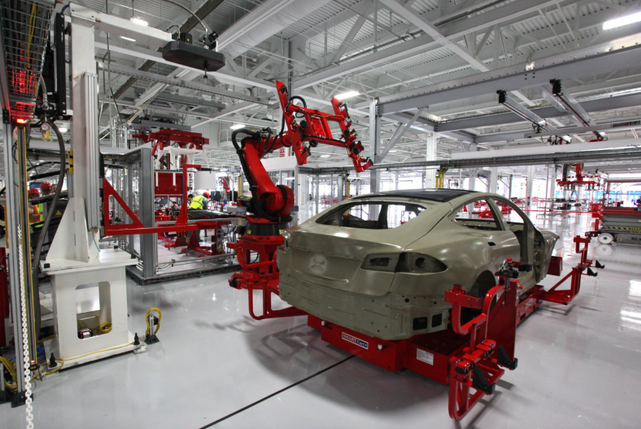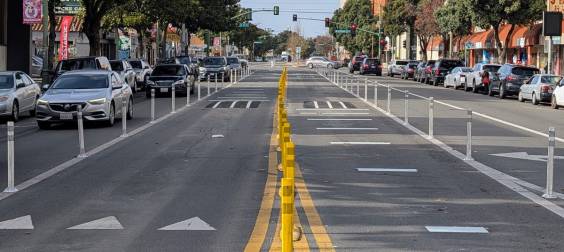The Democrats' blockbuster climate package would create a new tax credit for the purchase of electric vehicles, but automakers are warning that they won't be able to meet the new demand while also divesting from foreign supply chains — prompting advocates to demand a decarbonization strategy that doesn't depend so heavily on 1,000-pound batteries.
As multiple outlets reported on Wednesday, car industry lobbyists are scrambling to renegotiate the $7,500 maximum electric vehicle tax credit outlined in the $728-billion energy and healthcare bill known as the Inflation Reduction Act, arguing that the incentive may be functionally unusable by most of their potential customers thanks to the bill's new "Buy American" provisions.
By 2023, taxpayers won't be able to claim the credit if their vehicles' batteries contain components which were manufactured by a "foreign entity of concern" — and by 2024, even the minerals that eligible vehicle batteries are made of may not be produced, or even recycled, by a country with which the U.S. does not have a free trade agreement. That list of "concerning" countries, experts say, almost certainly includes China, which currently manufacturers roughly nearly 80 percent of EV batteries, while the U.S. produces just 8 percent. China also refines and processes the majority of many critical mineral components essential to building the lithium ion power sources, even when those minerals are mined from other countries.
The bill also requires an escalating percentage of the components of both an eligible vehicle and its battery to be assembled in North America, a high bar that automakers fear they'll be unable to clear despite billions of additional dollars in the bill aimed at helping increase on-shore production. Experts like Morgan Bazilian of the Payne Institute at the Colorado School of Mines estimate that building the kind of robust domestic supply chain necessary to meet consumer demand for the credit might take "more than a decade."
“It’s not like the car companies are deliberately overlooking a U.S. supply chain," Brett Hartl, government affairs director for the Center for Biological Diversity, told E&E News. "It just doesn’t exist right now.”
Fun Fact: China 🇨🇳 ranks #1 globally in the EV battery supply chain, providing 80% of the global raw material refining capacity, and 60% of the world’s graphite production. 🤔 If both gasoline and EV supply get crushed, what then? pic.twitter.com/0IKXNL2PIV
— KBirb (@birb_k) August 3, 2022
Even as some pundits argued that at least some links in the battery supply chain might be wrested from China, substantially fewer of them devoted any serious analysis to why the climate package is so heavily focused on electric cars in the first place — and why non-automotive modes were barely given anything.
Supply chain squabbles aside, countless studies have shown that it is mathematically impossible for America's transportation sector to meet its climate targets through vehicle electrification alone, even if the United States achieves an even remotely realistic goal of selling 40 percent battery-powered new vehicles by 2050.
That's because Americans already drive so much, and drive such big vehicles, that the monster gas-powered cars left on the road would cancel out much of the EV fleet's emissions reductions — and even if Americans drove 20 percent fewer miles than they do now, the sector would still fall short. (The U.S. Energy Information Administration, for the record, projects that U.S. vehicle miles traveled will increase 18 percent by 2050 unless governments take transformative action to shift travelers onto other modes.)
Radically reducing U.S. reliance on automobiles, by contrast, not only stands a far better chance of averting climate disaster, but would also help reduce U.S. dependence on all foreign energy sources, whether they're green or not.
That's because many active modes, like biking and walking, don't necessarily require a battery at all, and even the ones that do, like e-bikes and power wheelchairs, require a tiny fraction of the components and materials necessary to power a single electric car. A green automotive battery typically weighs about 1,000 pounds, with monster trucks like the EV hummer toting batteries weighing 2,923 pounds, more than an entire modest sedan; an electric bike battery, by contrast, weighs just eight pounds. Both vehicles are typically used to transport a single passenger.
To put it another way:
— David Zipper (@DavidZipper) February 16, 2022
1 Hummer EV battery = 380 e-bike batteries
(@RadPowerBikes batteries are 7.7 lbs each) pic.twitter.com/nAXzdtx4gf
Electric buses, of course, could represent one of the most efficient possible uses of precious domestic battery resources around, and the transit industry on the whole is already a significant driver of the American economy. Since 2020, U.S. agencies have been mandated to purchase 70 percent of their transit components and subcomponents from domestic manufacturers, and a staggering 91 percent of U.S. congressional districts are home to at least one of those companies — which means residents of those districts benefit directly from federal transit investment, even if they aren't personally riding buses and trains.
The architect of the EV's Buy America provision, Sen. Joe Manchin (D-W.V.), has argued that America shouldn't be "building a transportation mode on the backs of foreign supply chains." The best way to do that — and to save the planet — is to build a transportation system that isn't dependent on driving alone.






